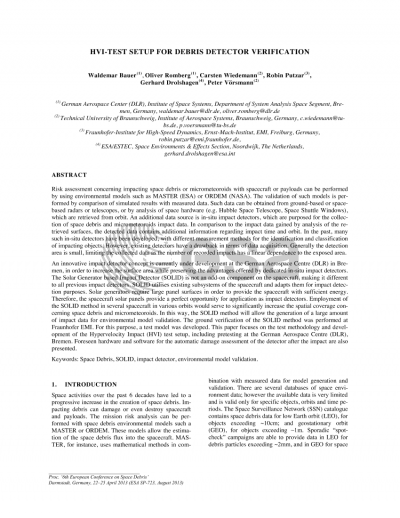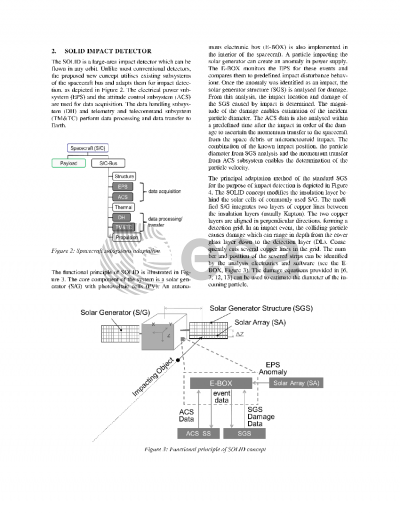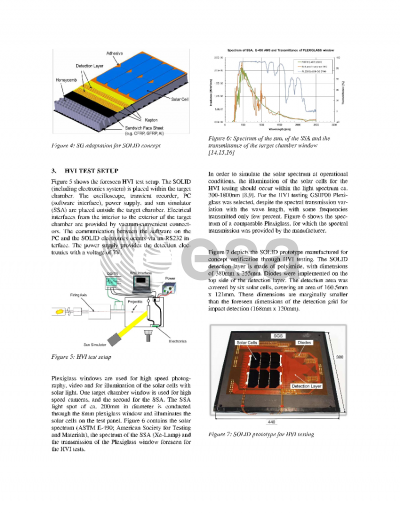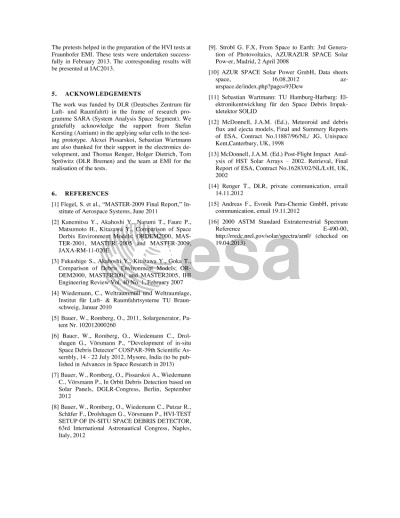Document details

Abstract
Risk assessment concerning impacting space debris or micrometeoroids with spacecraft or payloads can be performed by using environmental models such as MASTER (ESA) or ORDEM (NASA). The validation of such models is performed by comparison of simulated results with measured data. Such data can be obtained from ground-based or space-based radars or telescopes, or by analysis of space hardware (e.g. Hubble Space Telescope, Space Shuttle Windows), which are retrieved from orbit. An additional data source is in-situ impact detectors, which are purposed for the collection of space debris and micrometeoroids impact data. In comparison to the impact data gained by analysis of the retrieved surfaces, the detected data contains additional information regarding impact time and orbit. In the past, many such in-situ detectors have been developed, with different measurement methods for the identification and classification of impacting objects. However, existing detectors have a drawback in terms of data acquisition. Generally the detection area is small, limiting the collected data as the number of recorded impacts has a linear dependence to the exposed area. An innovative impact detector concept is currently under development at the German Aerospace Centre (DLR) in Bremen, in order to increase the surface area while preserving the advantages offered by dedicated in-situ impact detectors. The Solar Generator based Impact Detector (SOLID) is not an add-on component on the spacecraft, making it different to all previous impact detectors. SOLID utilises existing subsystems of the spacecraft and adapts them for impact detection purposes. Solar generators require large panel surfaces in order to provide the spacecraft with sufficient energy. Therefore, the spacecraft solar panels provide a perfect opportunity for application as impact detectors. Employment of the SOLID method in several spacecraft in various orbits would serve to significantly increase the spatial coverage concerning space debris and micrometeoroids. In this way, the SOLID method will allow the generation of a large amount of impact data for environmental model validation. The ground verification of the SOLID method was performed at Fraunhofer EMI. For this purpose, a test model was developed. This paper focuses on the test methodology and development of the Hypervelocity Impact (HVI) test setup, including pretesting at the German Aerospace Centre (DLR), Bremen. Foreseen hardware and software for the automatic damage assessment of the detector after the impact are also presented.
Preview








